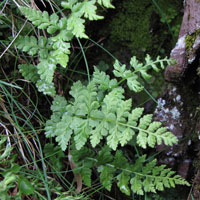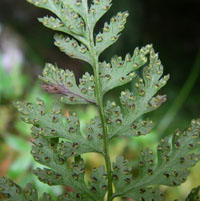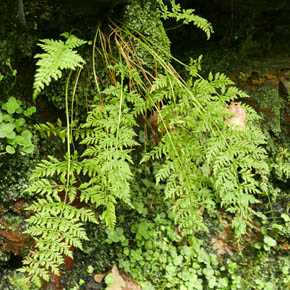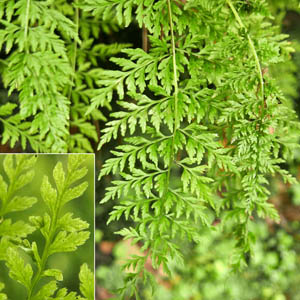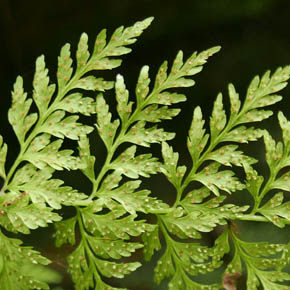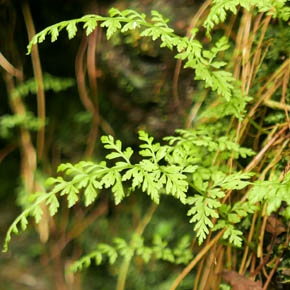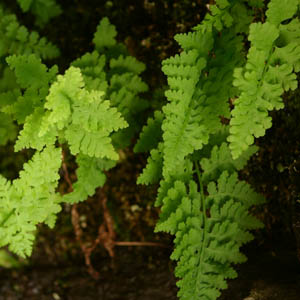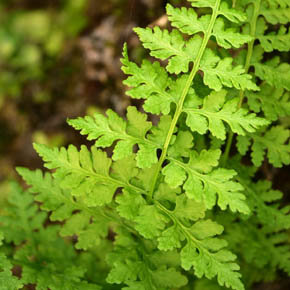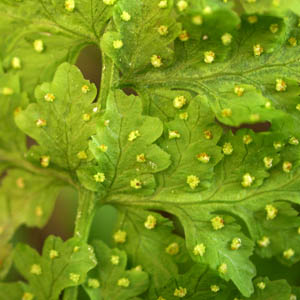Ferns and fern-allies (=Pteridophytes)
Ferns are flowerless plants that reproduce by spores, but unlike Mosses and Liverworts they have vascular (water conducting) tissue that allows them to colonise drier sites and to grow taller to >1 m. They are diverse in structure.
Note that ferns are classified into several families: Marseliaceae, Ophioglossaceae, Azollaceae, Woodsiaceae, Thelypteridaceae, Cystopteridaceae, Athyridaceae, Aspleniaceae, Pteridaceae, Hymenophyllaceae, Osmundaceae, Blechnaceae, Dryopteridaceae, Onocleaceae, Polypodiaceae, etc.
Other Pteridophytes are Horsetails , Clubmosses and Quillworts
Ferns
Plant form: Select one of these eight groups
Simple fronds
+/- Fan-shaped or forked
Lobed or 1-Pinnate leaves
2- or more Pinnate leaves
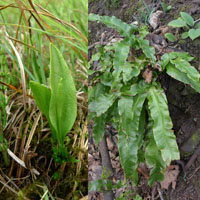
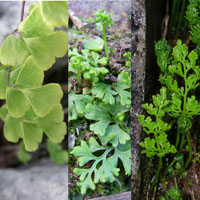
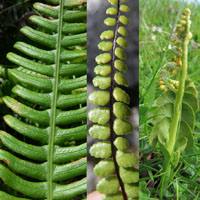
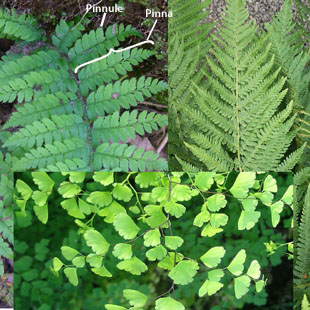
Floating, tiny
Moss-like, hanging
Resembling clover
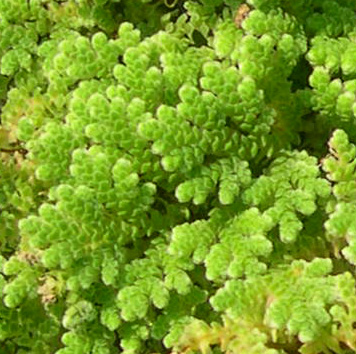
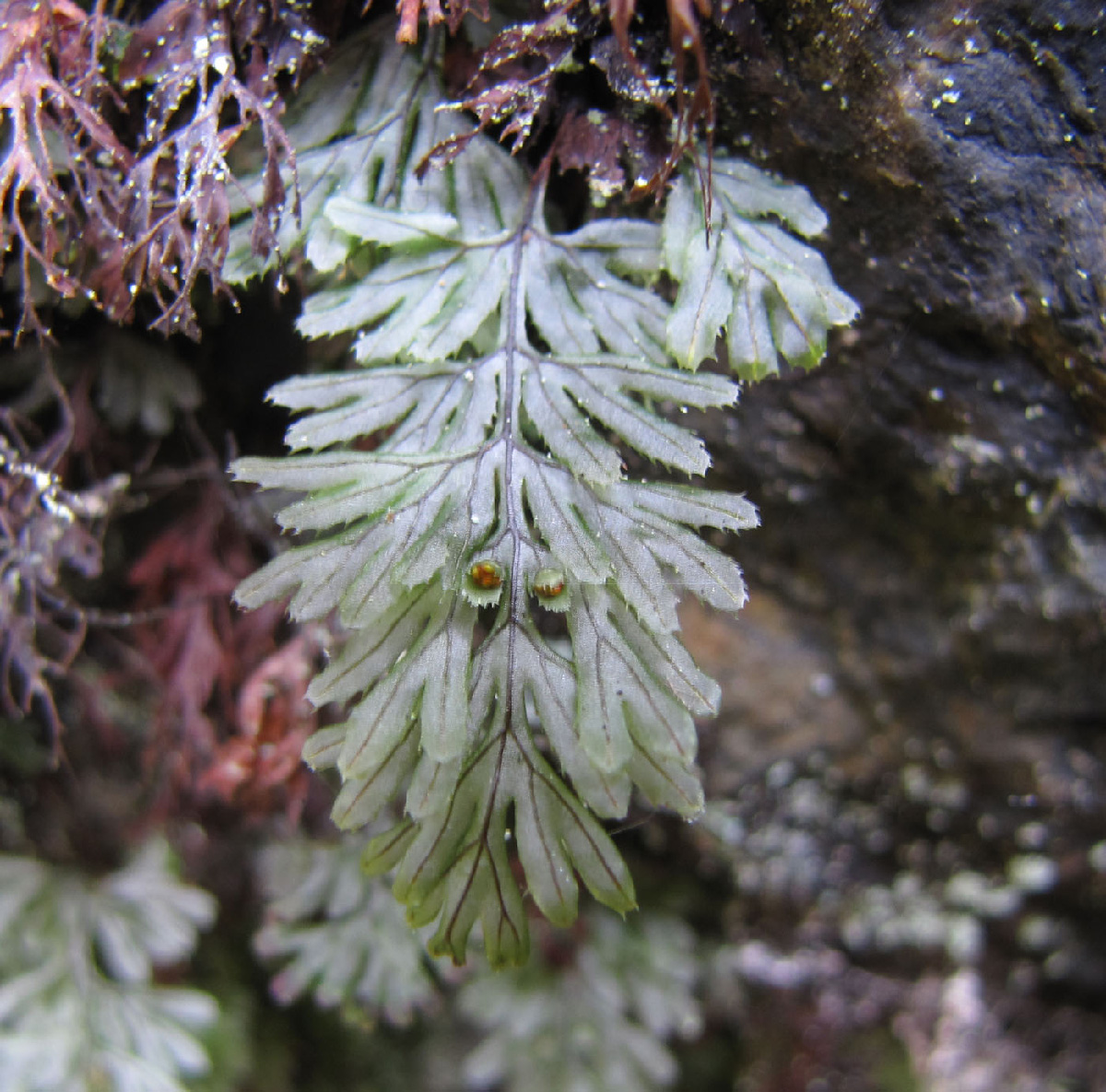
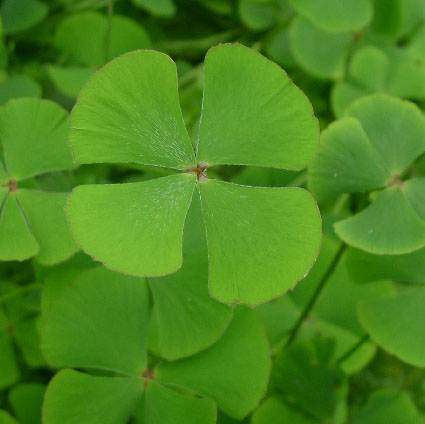
Azolla filiculoides
Hymenophyllum
Marsilea quadrifolia
See also:
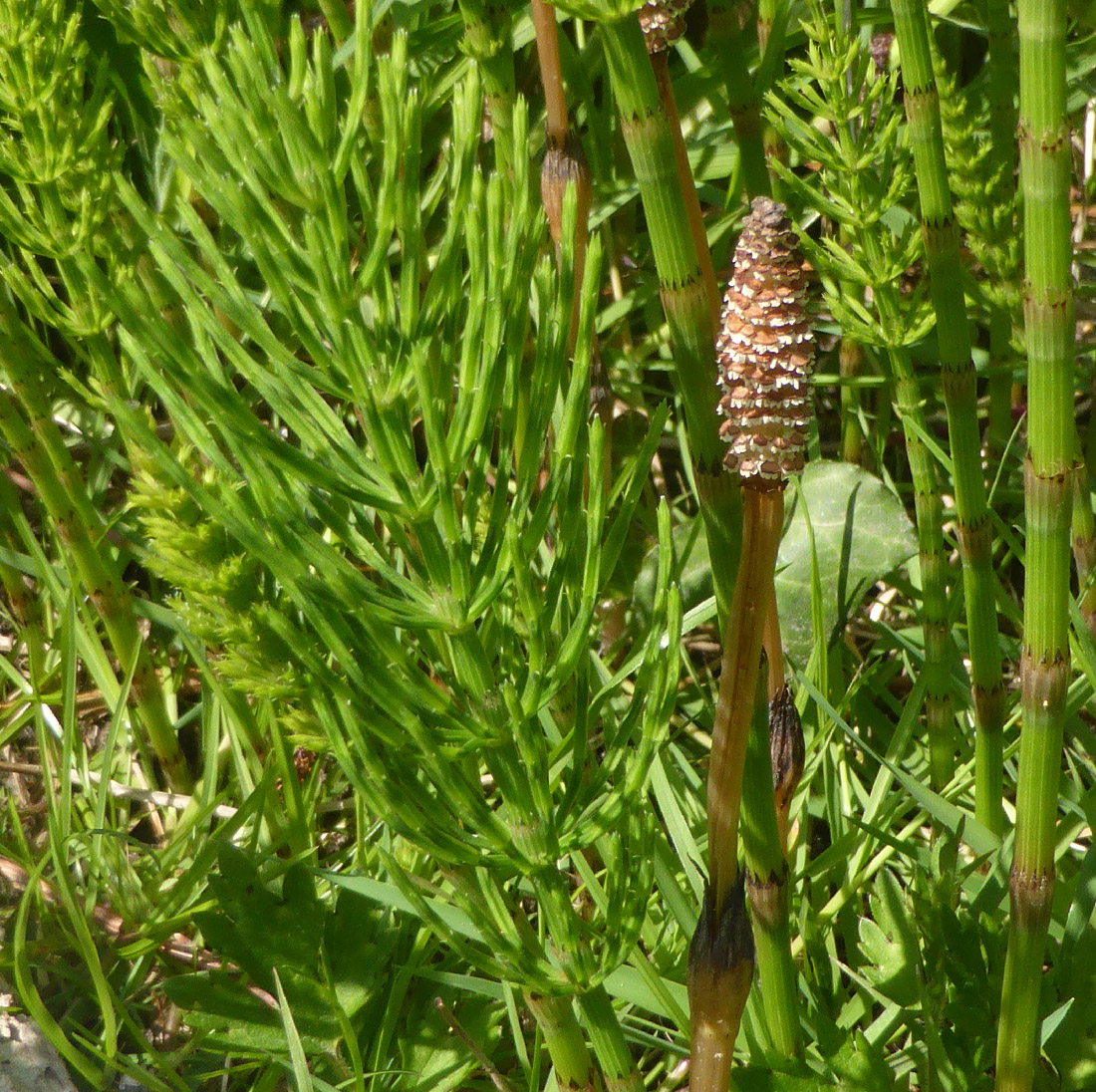
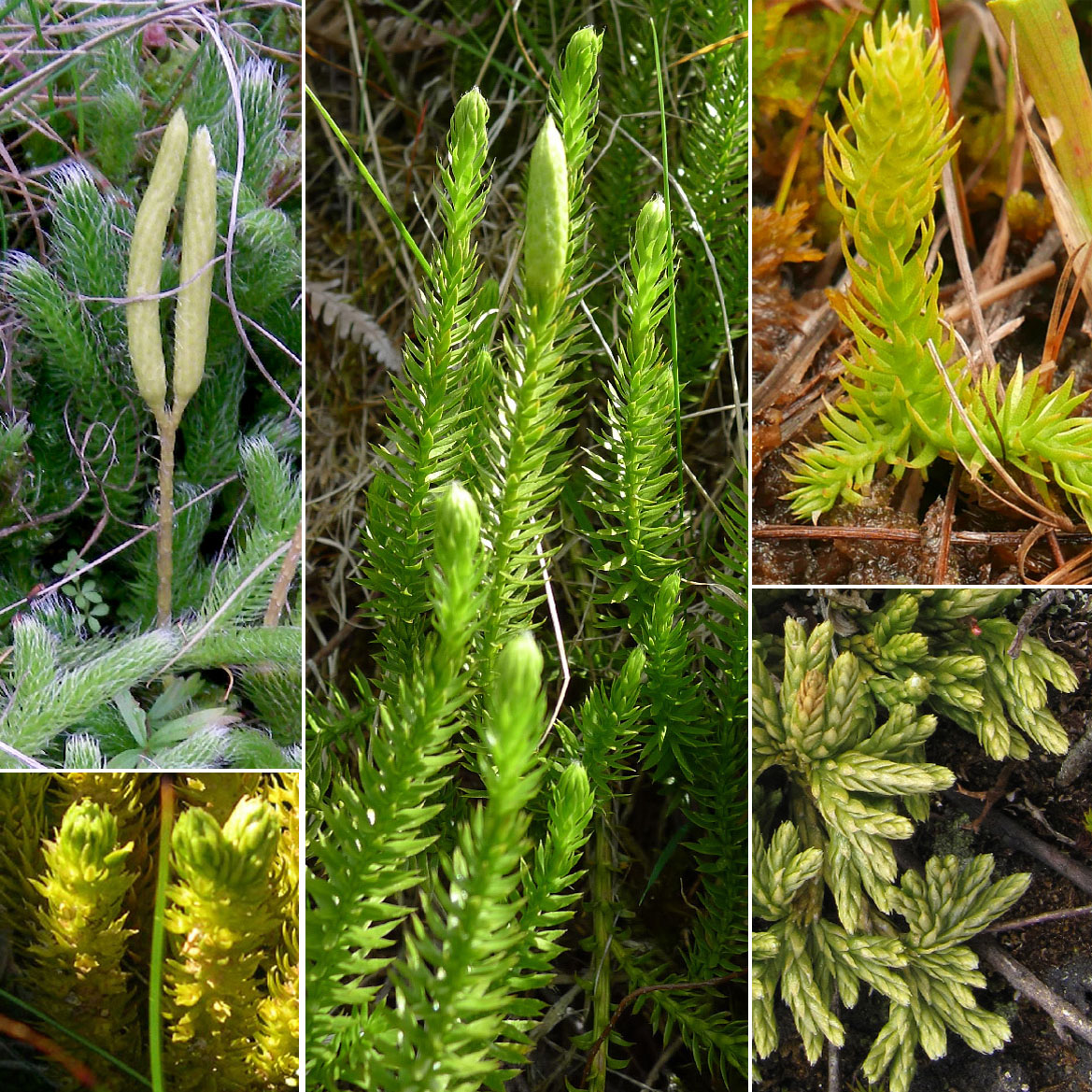
Fruiting structures: select from 4 options
Reproductive structures:
(a) distinct from vegetative:
Matteucia
Osmunda
Blechnum
Cryptogramma
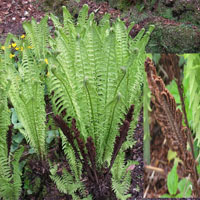
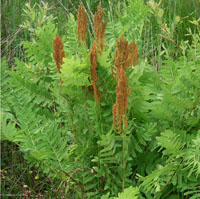

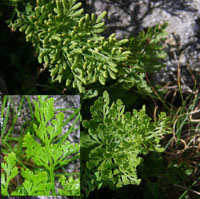
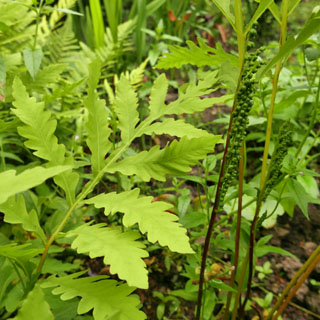
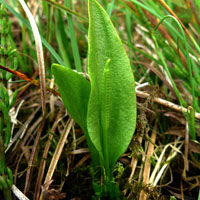
(b) Linear sporangia (or solid spore masses)
Asplenium marinum
Asplenium trichomanes
Asplenium viride
Asplenium adiantum-nigrum

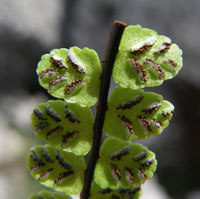
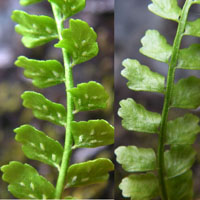
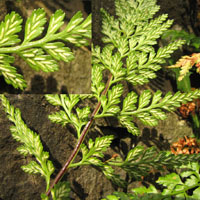
Asplenium ruta-muraria
Asplenium septentrionale
Asplenium ceterach
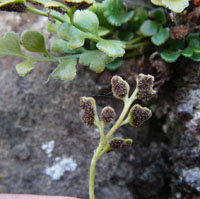
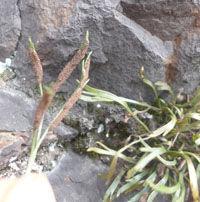
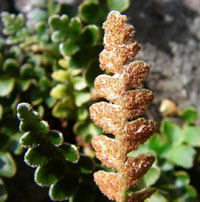
(c) Sporangia comma-shaped to circular
Phegopteris connectilis
Oreopteris limbosperma
Gymnocarpium robertianum
Gymnocarpium dryopteris
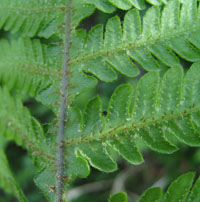
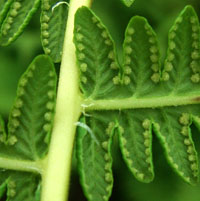
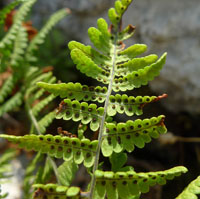
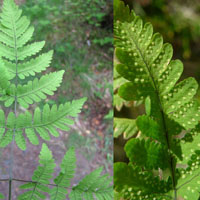
Anogramma leptophylla
Cystopteris fragilis
Woodsia ilvensis
Woodsia alpina
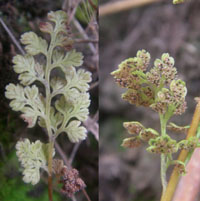
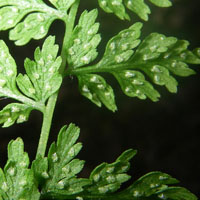
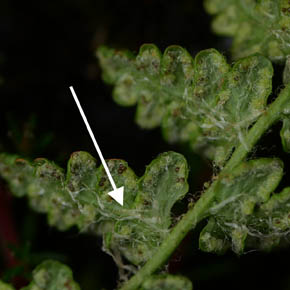
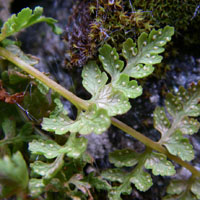
Polypodium interjectum
Polypodium vulgare
Athyrium filix-femina
Athyrium distentifolium
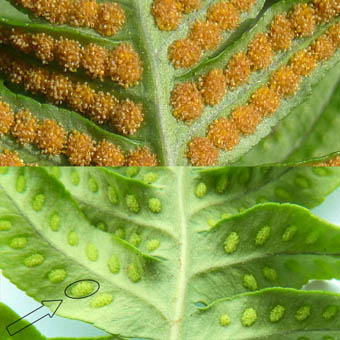
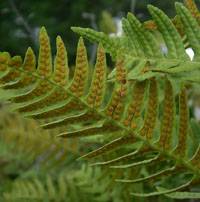
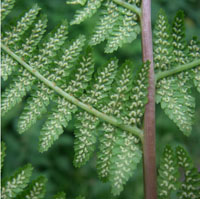
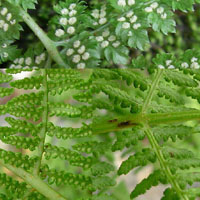
Dryopteris felix-mas
Dryopteris affinis
Dryopteris carthusiana
Dryopteris aemula
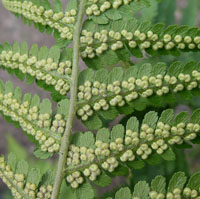
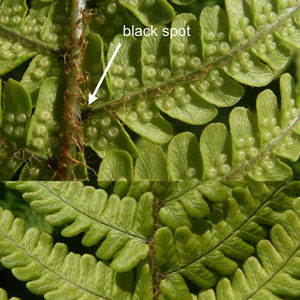
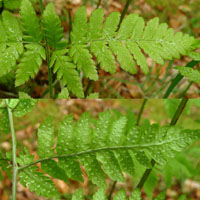
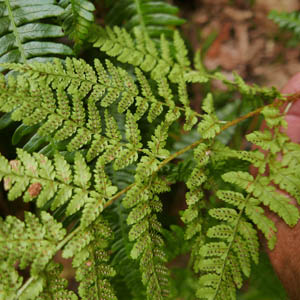
Dryopteris expansa
Dryopteris submontana
Dryopteris carthusiana
Dryopteris dilatata
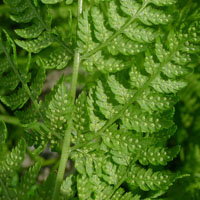
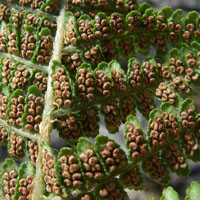
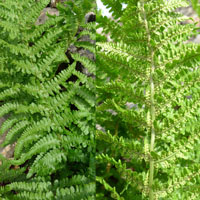
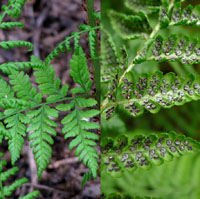
Polystichum aculeatum
Polystichum setiferum
Pteridium aquilinum
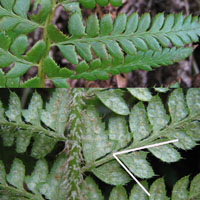
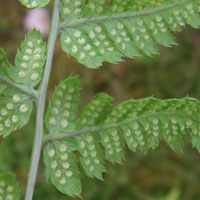
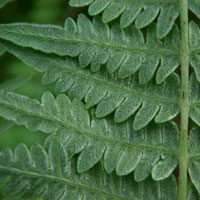
(d) Sori under edge of pinnules
Thelypteris palustris
Pteridium aquilinum
Oreopteris limbosperma
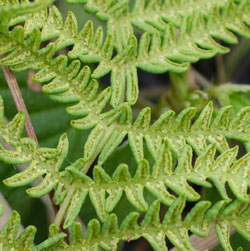


Frond/leaf form (8 options):
Simple entire fronds
Pilularia
Asplenium scolopendrium
Ophioglossum vulgatum
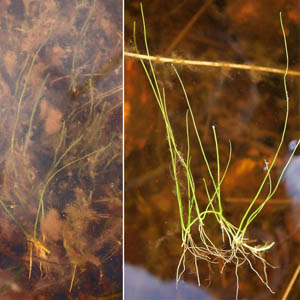
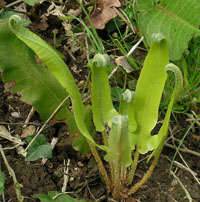
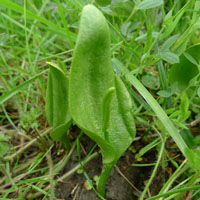
Small ferns (<30 cm high) with fronds or leaflets +/- fan-shaped or forked
Adiantum capillis-veneris
Asplenium ruta-muraria
Anogramma
Cryptogramma crispa
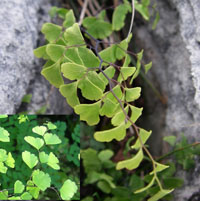



Asplenium septentrionale
Azolla
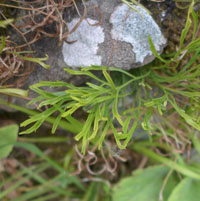

Deeply lobed or singly pinnate leaves (any pinnules +/- entire)
Botrychium
Polypodium
Blechnum
Asplenium ceterach
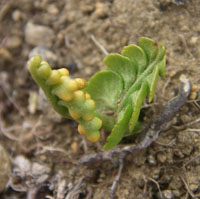
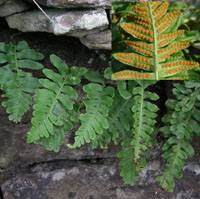

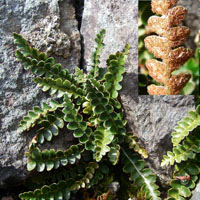
Polystichum lonchitis
Asplenium marinum
Asplenium trichomanes
Asplenium viride


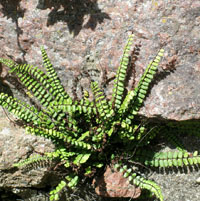
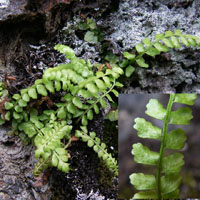
Onoclea sensibilis
Cyrtomium
Blechnum cordatum
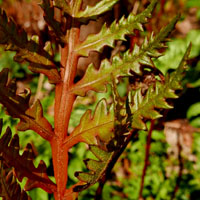
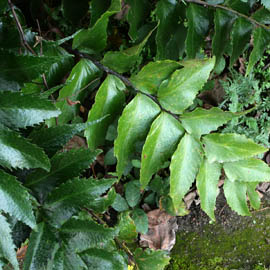
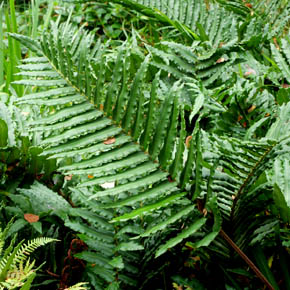
2- or more pinnate ferns by size
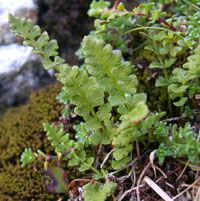
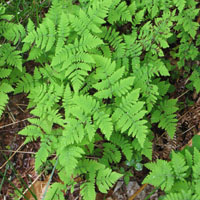
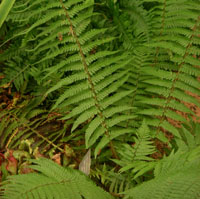
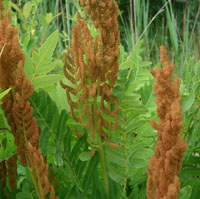
Delicate small pinnate ferns (<c.20 cm)
Woodsia
Woodsia
Cystopteris
Cystopteris

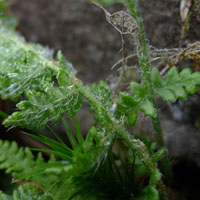
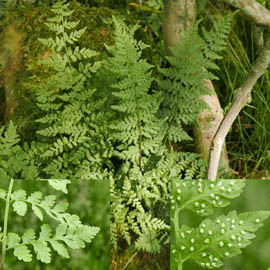
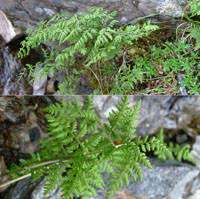

Slightly larger pinnate ferns (to c.40 cm), generally not growing in tufts
Gymnocarpium robertianum
Gymnocarpium dryopteris
Phegopteris
Asplenium adiantum-nigrum
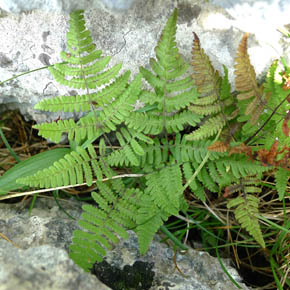

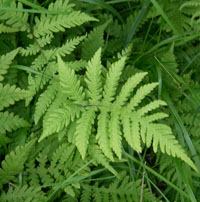
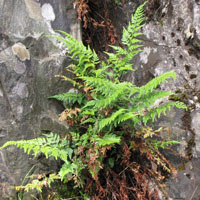
Cryptogramma crispa
Adiantum capillis-veneris
Cystopteris



Mostly tufted larger pinnate ferns (to 120cm or more)
By plant form:
Matteucia
Oreopteris
Dryopteris
Polystichum

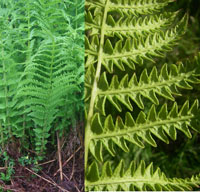

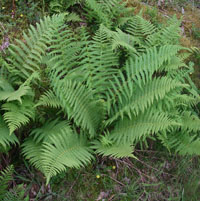
Ostrich fern
Lemon scented fern
Male ferns
Shield ferns
Athyrium
Pteridium
Thelypteris
Osmunda
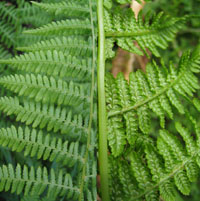
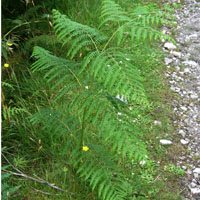
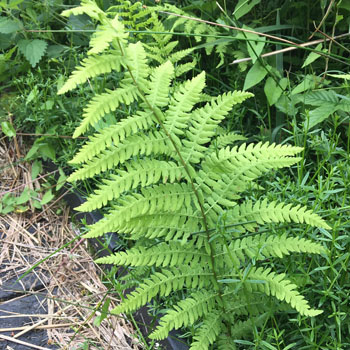

Key to leaves of tufted larger ferns (to 120cm)
Polystichum aculeatum
Polystichum setiferum
Athyrium filix-femina
Athyrium distentifolium

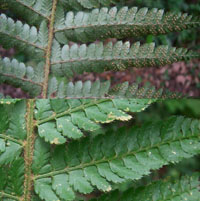


Hard Shield-fern
Soft Shield-fern
Lady-fern
Alpine Lady-fern
Dryopteris aemula
Dryopteris affinis
Dryopteris filix-mas
Dryopteris oreades
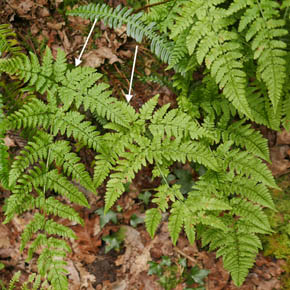

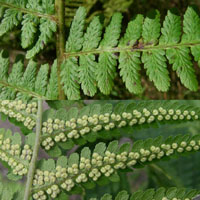

Hay-scented Fern
Scaly Male-fern
Male-fern
Mountain Male-fern
Dryopteris carthusiana
Dryopteris dilatata
Dryopteris expansa
Dryopteris submontana

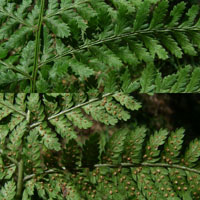
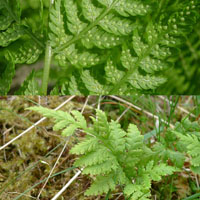
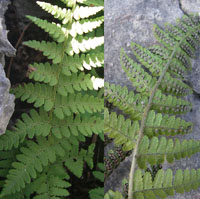
Narrow Buckler-fern
Broad Buckler-fern
Northern Buckler-fern
Rigid Buckler-fern
Matteucia struthiopteris
Pteridium aquilinum
Oreopteris limbosperma
Thelypteris palustris
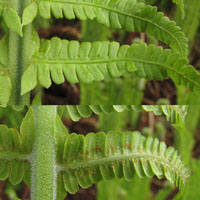
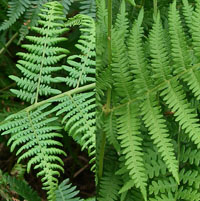


Ostrich Fern
Bracken
Lemon-scented Fern
Marsh Fern
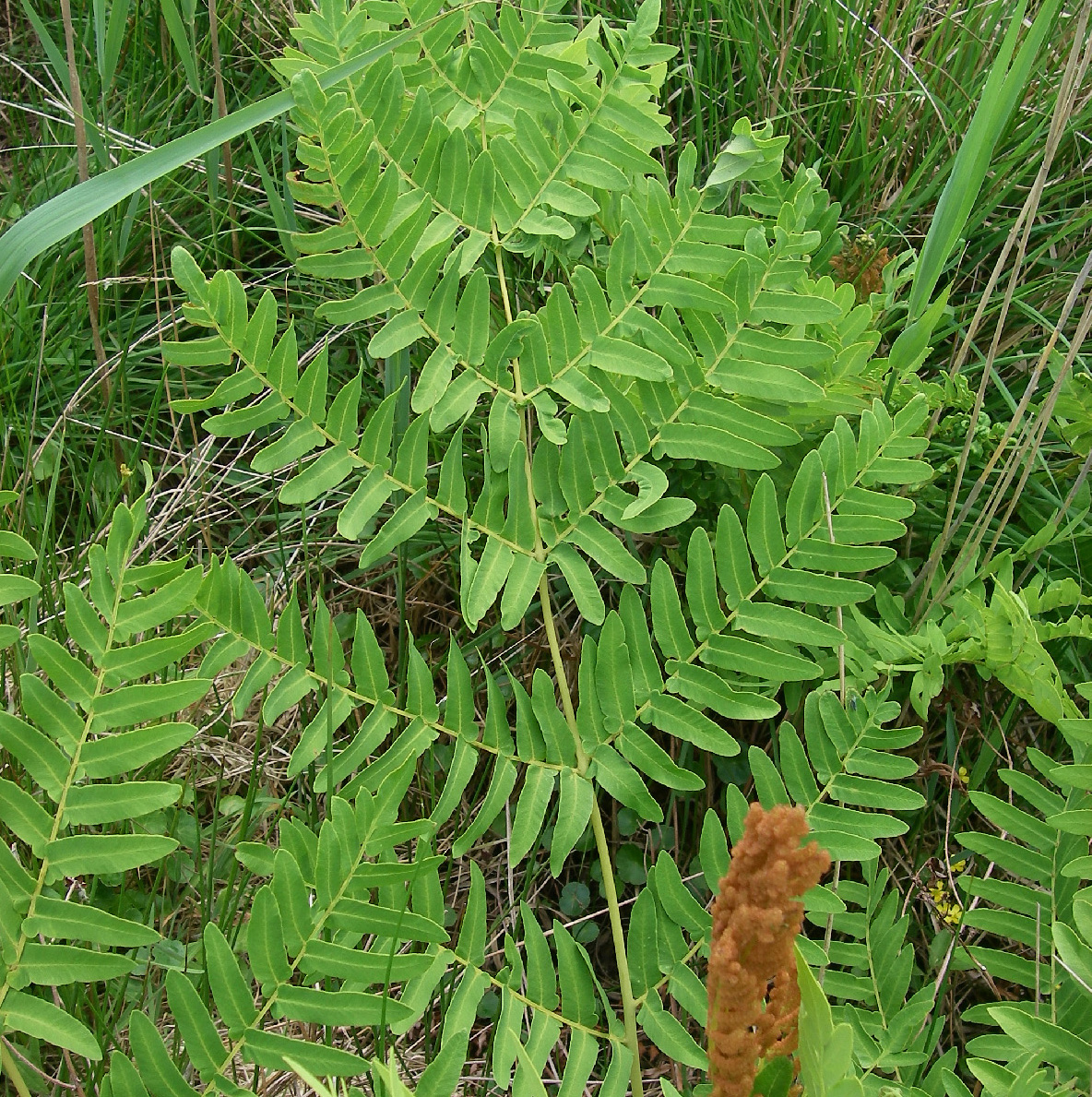
Pteridaceae/Adiantum . . . . Maidenhair Fern
Adiantum capillus-veneris . . . . Maidenhair Fern
Lvs often apparently fan-shaped or pinnate but with dichotomous branching; local, in moist sheltered spots, esp. in limestone grykes in W Br and W Ire

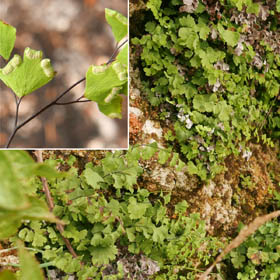
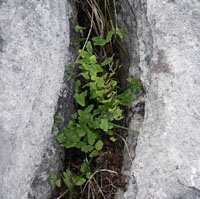
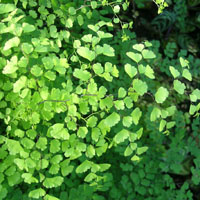
The similar A. raddianum has horseshoe-shaped, rather than linear, sporangia.
Compare also the pale-stemmed
Yellow Corydalis:
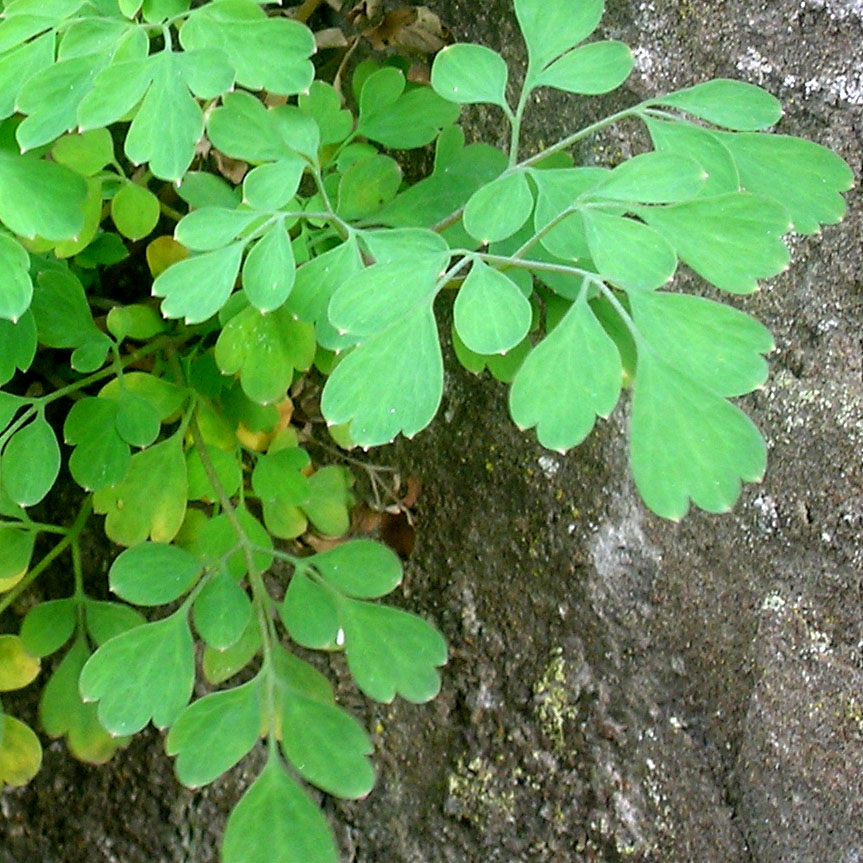
Pteridaceae/Anogramma . . . . Jersey Fern
Anogramma leptophylla . . . . Jersey Fern
Rare on shady banks in Jersey; young seedlings of Black spleenwort can be similar

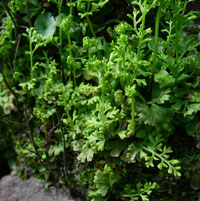

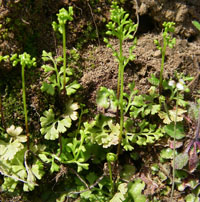
Aspleniaceae/Asplenium . . . . Spleenworts
Asplenium adiantum-nigrum . . . . Black Spleenwort
Triangular leaves, long petiole, branches alternating & with characteristic long thin sori


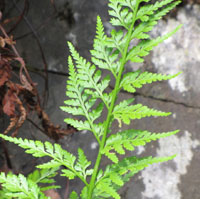
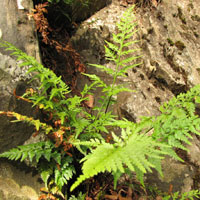
To distinguish A. adiantum-nigrum (bottom) and A. obovatum (top):

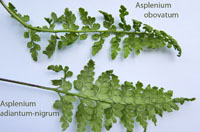
Asplenium obovatum . . . . . Lanceolate Spleenwort
Similar to Black Spleenwort, but with petiole << frond, sori shorter; Common in CI & SW En (esp. coastal); more local elsewhere
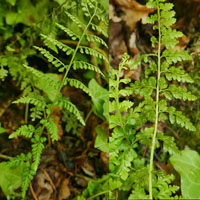
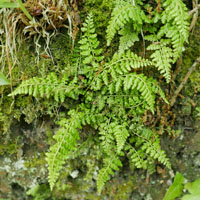
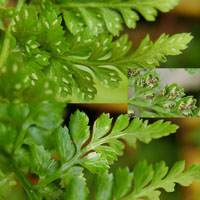
Asplenium ceterach . . . . Rustyback Fern
Previously Ceterach officinarum; common on base-rich substrates and mortar in walls in Ire & S & W Br, less common in E & N
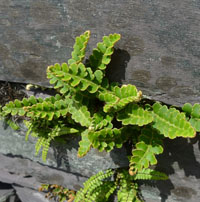

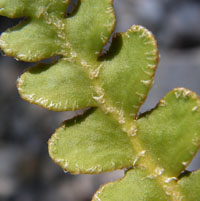

Asplenium marinum . . . . Sea Spleenwort
Rock crevices by the sea around the coast exc. SE Br


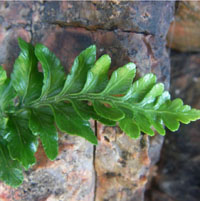
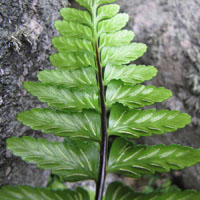
Asplenium ruta-muraria . . . . Wall-rue
Common on walls

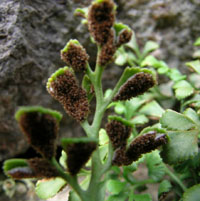

Asplenium scolopendrium . . . . Hart's-tongue Fern
Common in woodland
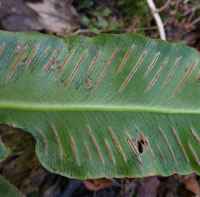
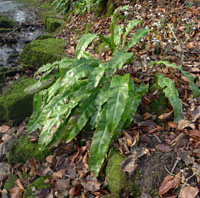

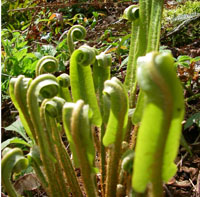
Asplenium septentrionale . . . . Forked Spleenwort
A rather local evergreen fern of acidic rocks and metalliferous mine spoil, esp. in Wa, Lake District and a few places in N Br, also Galway


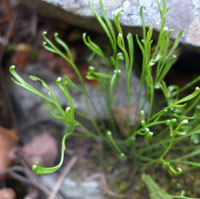
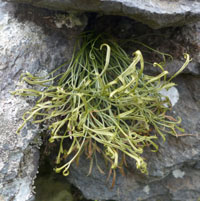
Asplenium trichomanes . . . . Maidenhair Spleenwort
Common on walls; black midrib (sometimes split into a number of subspp)
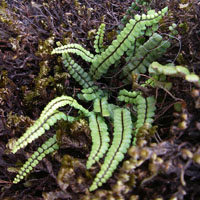
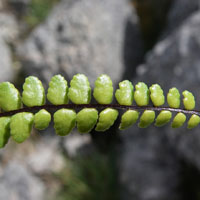


Asplenium viride . . . . Green Spleenwort
Rather local on damp upland rocks on base-rich soil; like A. trichomanes but with green midrib

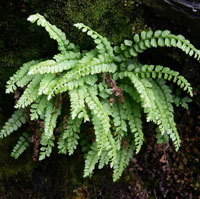

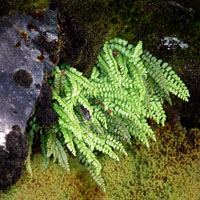
Athyriaceae/Athyrium . . . . Lady-fern
Athyrium distentifolium . . . . Alpine Lady-fern
Sori usually without indusium; Local on acid scree and in gullies mostly above 600 m in C & N Sc
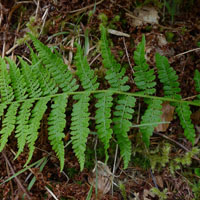
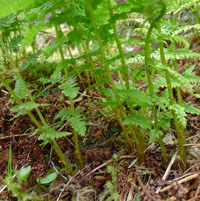
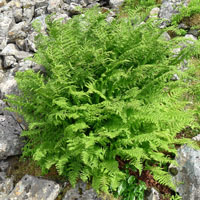

Athyrium filix-femina . . . . Lady-fern
Characteristic C- or J-shaped indusium over spores
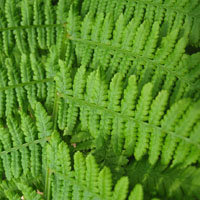

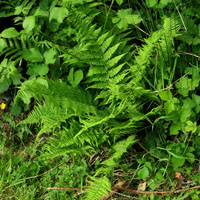

Salviniaceae/Azolla . . . . Water Fern
Azolla filiculoides . . . . Water Fern
Naturalised and floating on water bodies around the BI

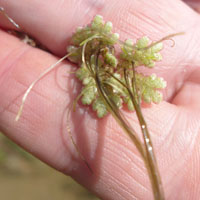
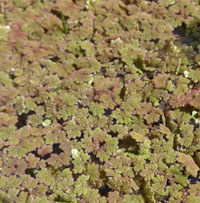
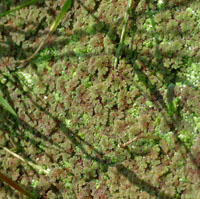
Blechnaceae/Blechnum . . . . Hard Fern
Blechnum cordatum . . . . Greater Hard Fern
An uncommon garden escape, esp in SW Br & Ire

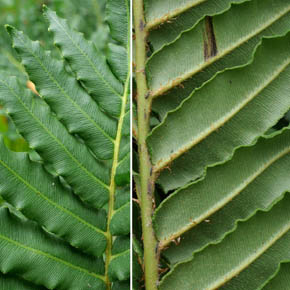
Blechnum spicant . . . . Hard Fern
Common on heathland and mountains; has distinct fruiting frond (see centre of third pic)
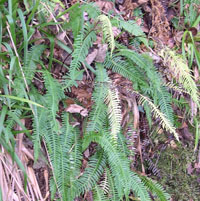
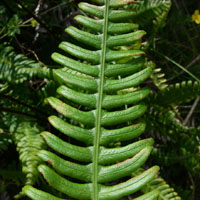


Ophioglossaceae/Botrychium . . . . Moonwort
Botrychium lunaria . . . . Moonwort
Dry, mostly upland, grassland, in Br and Ire, esp. N & W Br
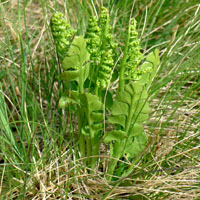

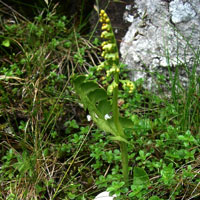
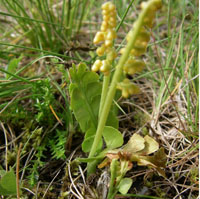
Botrychium nordicum . . . . Moonwort
Clearly toothed lvs; rare - a population has recently been identified at Glenshee Ski centre, but may be more widespread
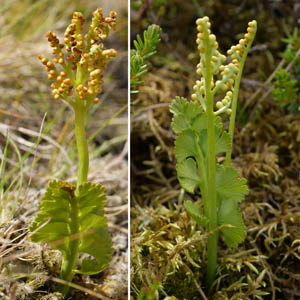
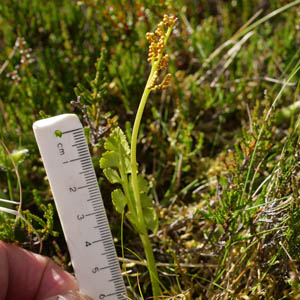
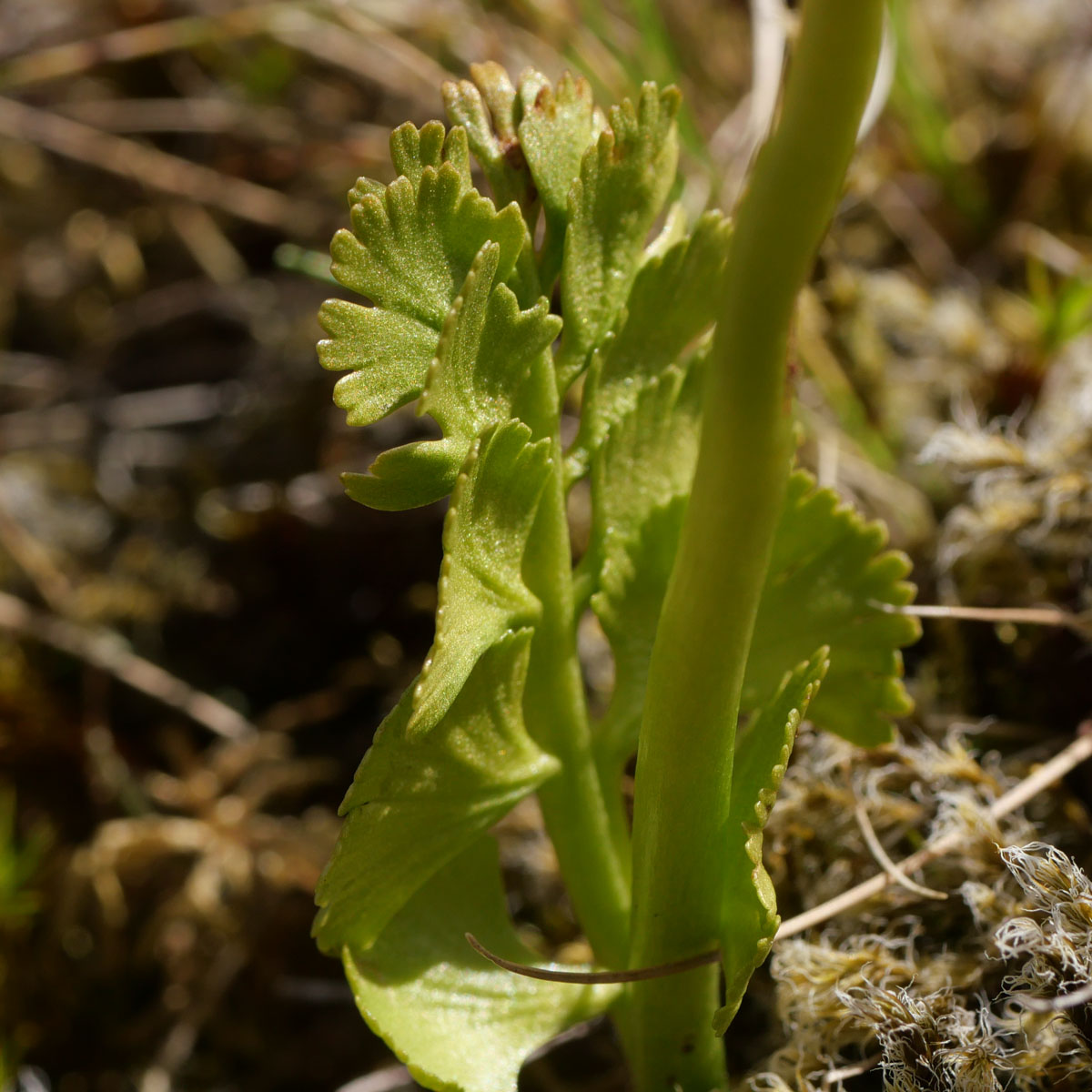
Pteridaceae/Cryptogramma . . . . Parsley Fern
Cryptogramma crispa . . . . Parsley Fern
Rocky mountains on acid soils

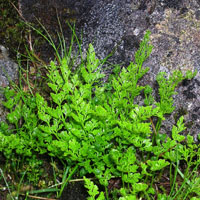
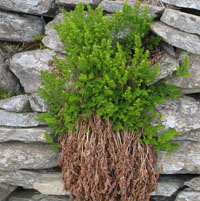
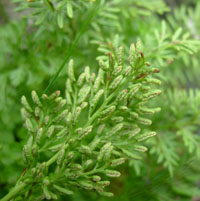
Dryopteridaceae/Cyrtomium . . . . House Holly-fern
Cyrtomium falcatum . . . . House Holly-fern
grown in conservatories but nat. on shady walls and rocks in W Br

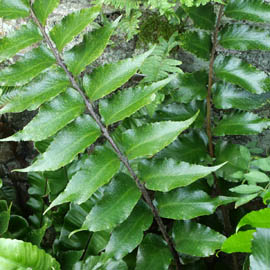
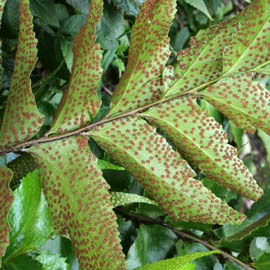
Cystopteridaceae/Cystopteris . . . . Bladder-ferns
Delicate ferns with generally 3-pinnate triangular leaves
Cystopteris montana . . . . Mountain Bladder-fern
Leaves triangular, with lowest pinnule largest, borne singly on long rhizomes; very local on wet rock gullies above 700 m in C Sc

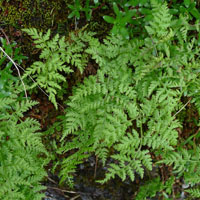
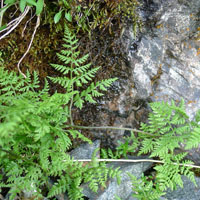
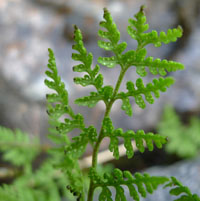
Other rare subspp. include C. dickieana (basic wet rocks in E Sc)
Dryopteridaceae/Dryopteris . . . . Male and Buckler-ferns
Dryopteris affinis agg. . . . . Scaly Male-fern
Pinnules parallel-sided (c.f. D. felix-mas); note black spot on underside at junction of pinnules, flattened tip of pinnules: often split into 3 subsp. (D. affinis subsp. affinis, D. affinis subsp. cambrensis and D. affinis subsp. borreri; the latter with very truncated tips to pinnules)
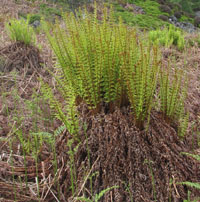


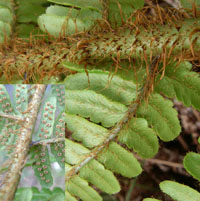
Dryopteris felix-mas . . . . Male-fern
Throughout BI in woods; pinnules tapering with rounded ends

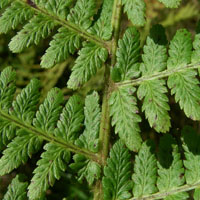


Dryopteris aemula . . . . Hay-scented Fern
Local in shady woods and ravines in Ire and W Br; frond bright green with crinkly appearance, winter green; scales long, evenly red-brown, often torn; pinnules concave on upper side, lowest pinnule larger (arrows)

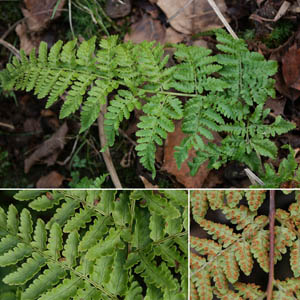

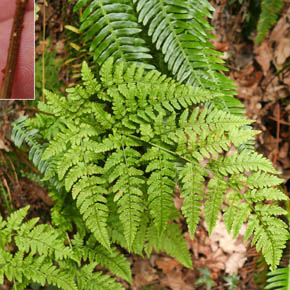
Dryopteris oreades . . . . Mountain Male-fern
Usually <50cm, stiff crinkly lvs; rocky places on mountains; only top 1/2 of frond fertile with sori usu. only on the basal 1/2 of pinnules, indusia edges 'tucked under'

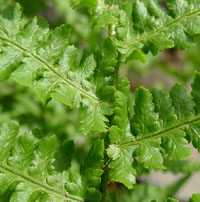
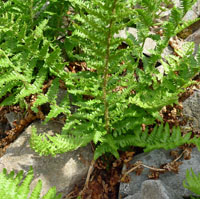
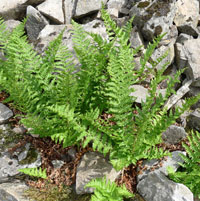
Dryopteris (cont) . . . . Buckler-ferns
Dryopteris carthusiana . . . . Narrow Buckler-fern
Grows from runners (not tufts); Wet woods and marshes throughout BI; stalk as long as rest of frond (which is not triangular); blunt pale brown scales

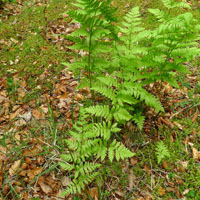
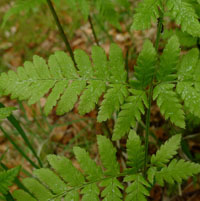
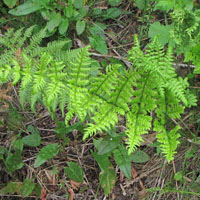
Dryopteris dilatata . . . . Broad Buckler-fern
Tufted, common in woods and shady places across the BI; 3-pinnate, dark green lvs with dark pointed stem scales with pale edges; pinnules 'droopy' (see pic. 4)


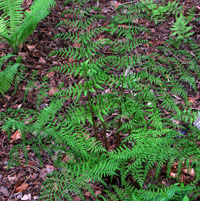
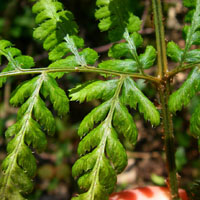
Dryopteris expansa . . . . Northern Buckler-fern
Locally common in upland scree and woodland in Sc, N Wa and N En; paler yellow than D.dilatata; triangular fronds, flat pinnules with lowest pinnule on basal side >1/2 length of its pinna


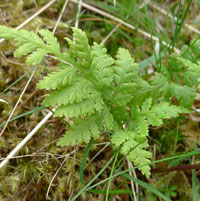

Dryopteris submontana . . . . Rigid Buckler-fern
Lvs stiff, greyish mealy with white hairs; plants like small shuttlecocks; local almost entirely on limestone in NW En



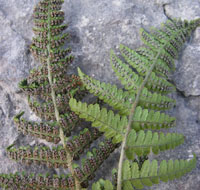
Cystopteridaceae/Gymnocarpium . . . . Oak Fern
Gymnocarpium dryopteris . . . . Oak Fern
Quite common in damp woods or shady places in N & W Br
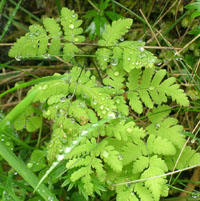
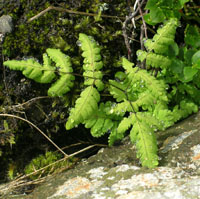


Gymnocarpium robertianum . . . . Limestone Fern
Local on screes or rocks on limestone in En and Wa; petiole greenish/brown rather than black; glandular-hairy stems/fronds
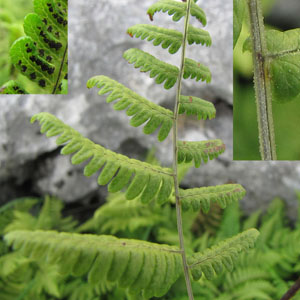
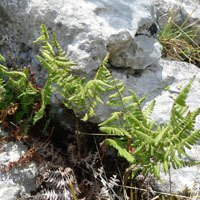


Hymenophyllaceae/Hymenophyllum . . . . Filmy-ferns
Filmy ferns (Hymenophyllum)- in very damp shaded areas, esp. in Ire and W, only:
Hymenophyllum tunbridgense . . . . Tunbridge Filmy-fern
Veins not to edge of frond; toothed indusium see fig.1
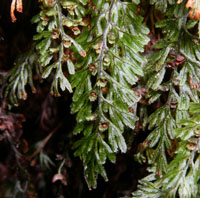
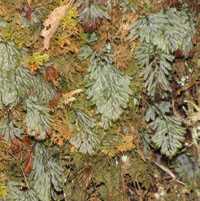
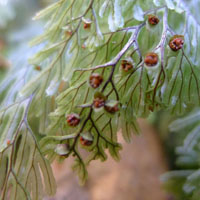
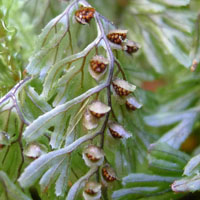
Hymenophyllum wilsonii . . . . Wilson's Filmy-fern
Less common than H. tunbridgense; veins extend to margin; untoothed indusium
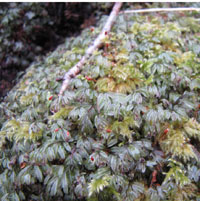
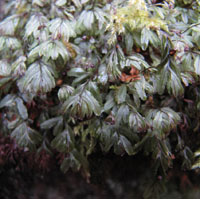
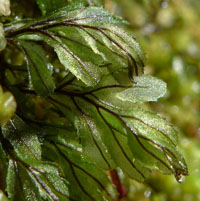
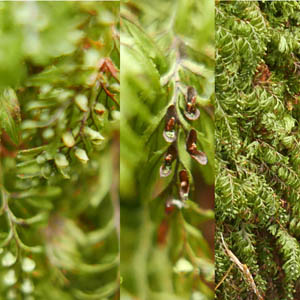
Marsileaceae/Marsilea . . . . Clover Fern
Marsilea quadrifolia . . . . Clover Fern
Grown in ferneries but not known in the wild

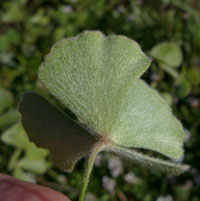
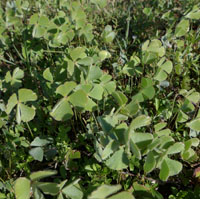
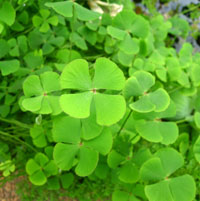
Onocleaceae/Matteucia . . . . Ostrich Fern
Matteucia struthiopteris . . . . Ostrich Fern
Naturalised in shady places scattered around the BI


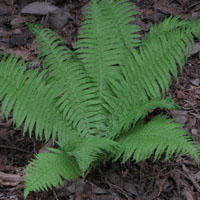
Onocleaceae/Onoclea . . . . Sensitive Fern
Onoclea sensibilis . . . . Sensitive Fern
Naturalised in a few shady places around the BI
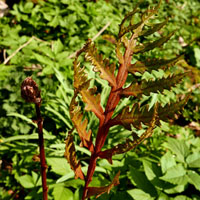


Ophioglossaceae/Ophioglossum . . . . Adder's-tongue Fern
Ophioglossum vulgatum . . . . Adder's-tongue Fern
Grassland, dune-slacks etc, mostly in lowlands throughout Br. Two smaller species occur rarely near the sea - O. azoricum and O. lusitanicum
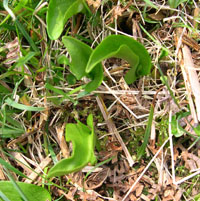
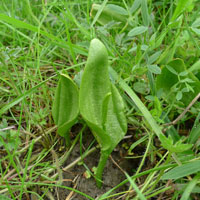


Thelypteridaceae/Oreopteris . . . . Lemon-scented Fern
Oreopteris limbosperma . . . . Lemon-scented Fern
Characteristic undersurface of lvs; note also strong tapering to base of frond
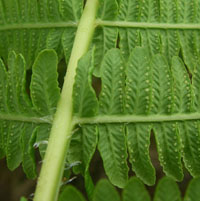

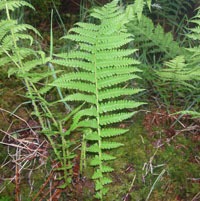

Osmundaceae/Osmunda . . . . Royal Fern
Osmunda regalis . . . .Royal Fern
A tall robust, broad-lvd ferm of marshy areas with fruiting fronds distinct mostly in W Ire and W Br but as far S as CI

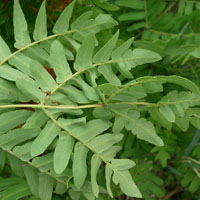


Thelypteridaceae/Phegopteris . . . . Beech Fern
Phegopteris connectilis . . . . Beech Fern
Shady, acid soils, fairly common in N & W Br; note lowest pinnae reflexed
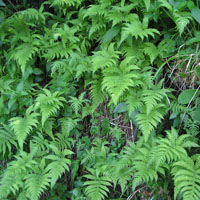
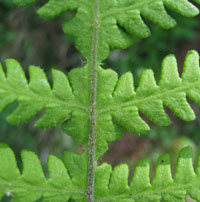


Marsileaceae/Pilularia . . . . Pillwort
Pilularia globulifera . . . . Pillwort
On mud/shallow water scattered across BI but esp. in W & S Br and W Ire; distinguished from rushes etc. as has no lf sheaths

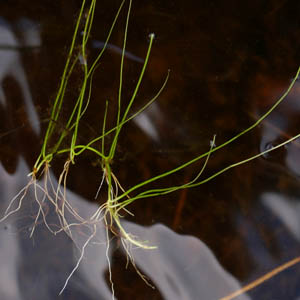
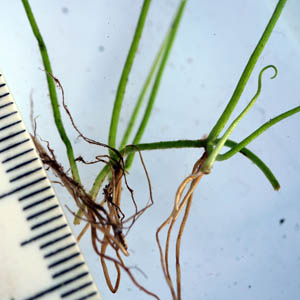
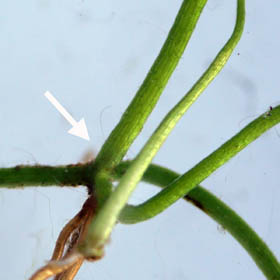
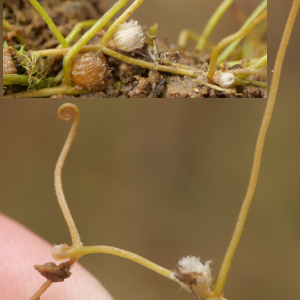
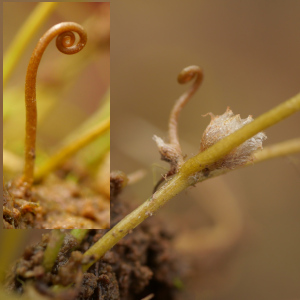
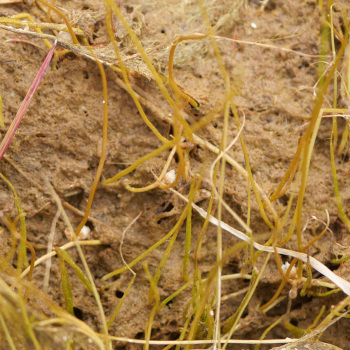
Beware - young plants of Eleocharis acicularis look similar but have faint lf sheaths & a well-developed rhizome:
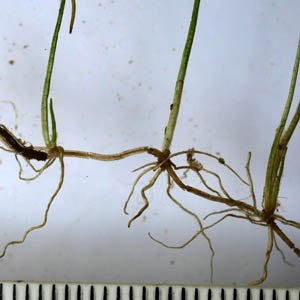
Polypodiaceae/Polypodium . . . . Polypody
Polypodium vulgare . . . . Polypody
Common thoughout Br & Ire; round 'sori' (Pic.3) (Pic.3)

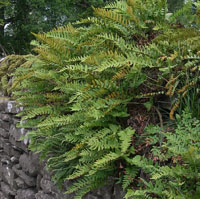

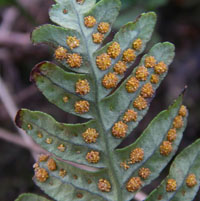
Polypodium interjectum . . . . Intermediate Polypody
Common in the S (e.g. the sp. in Jersey); often on calcareous substrates (e.g. mortar); N.B.angled oval 'sori' (Pic.3) (cf. pic.3 of P. vulgare)

Also P. cambricum (S polypody), which has lf blades <2x as long as wide and hairs mixed with the sporangia; less common and hard to distinguish from the above
Dryopteridaceae/Polystichum . . . . Shield-ferns
Note sharp/hairy points to pinnules:
Polystichum aculeatum . . . . Hard Shield-fern
More upland and N than P. setiferum; base of pinnules makes acute angle (Fig 3); frond narrows to base with short stipe
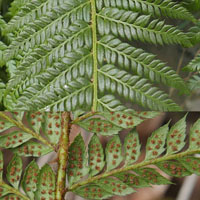
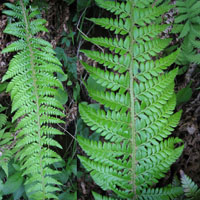

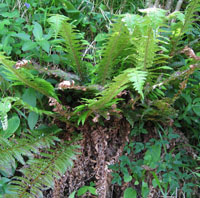
Polystichum lonchitis . . . . Holly Fern
Local on mountains (mostly above 600 m) in basic crevices esp. in N En and Sc and W Ire

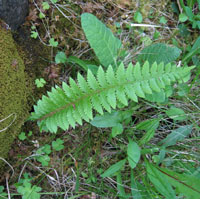
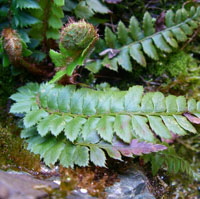
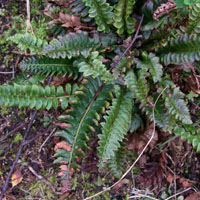
Polystichum setiferum . . . . Soft Shield-fern
Frequent in wet woods in CI, S and W Br and Ire; ; base of pinnules makes right-angle (Fig 1)
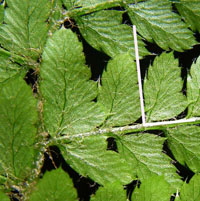

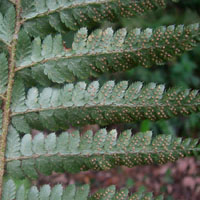

Dennstaedtiaceae/Pteridium . . . . Bracken
Pteridium aquilinum . . . . Bracken
Shoots single - but invasive over large areas. Sori inrolled along edges of pinnules.
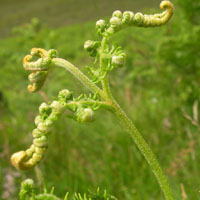



Thelypteridaceae/Thelypteris . . . . Marsh Fern
Thelypteris palustris . . . . Marsh Fern
Frequent only in E Anglia, scattered in BI N to C Sc; sori at edge of pinnules

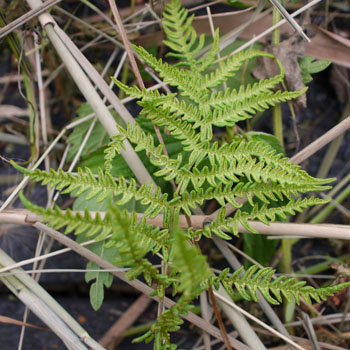
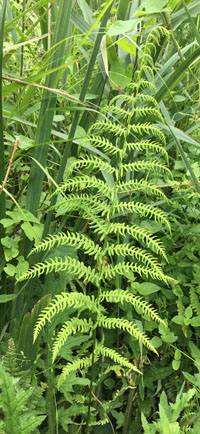

Woodiaceae/Woodsia . . . . Woodsia
Tiny 2-pinnate mountain ferns with pinnae divided nearly to midrib; W. ilvensis (more) hairy and with more elongated pinnae
Woodsia alpina . . . . Alpine Woodsia
Rare mountain fern, primarily on basic rocks in C Sc; pinnae not elongated


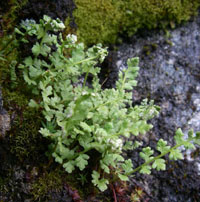
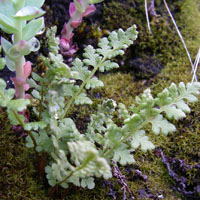
Woodsia ilvensis . . . . Oblong Woodsia
Very local mountain fern of crevices up to about 700m; the long thin scales on the pinnae midrib are diagnostic and the more elongated pinnae

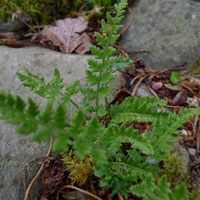
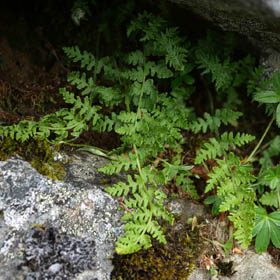

Mosses and Liverworts






































































































































